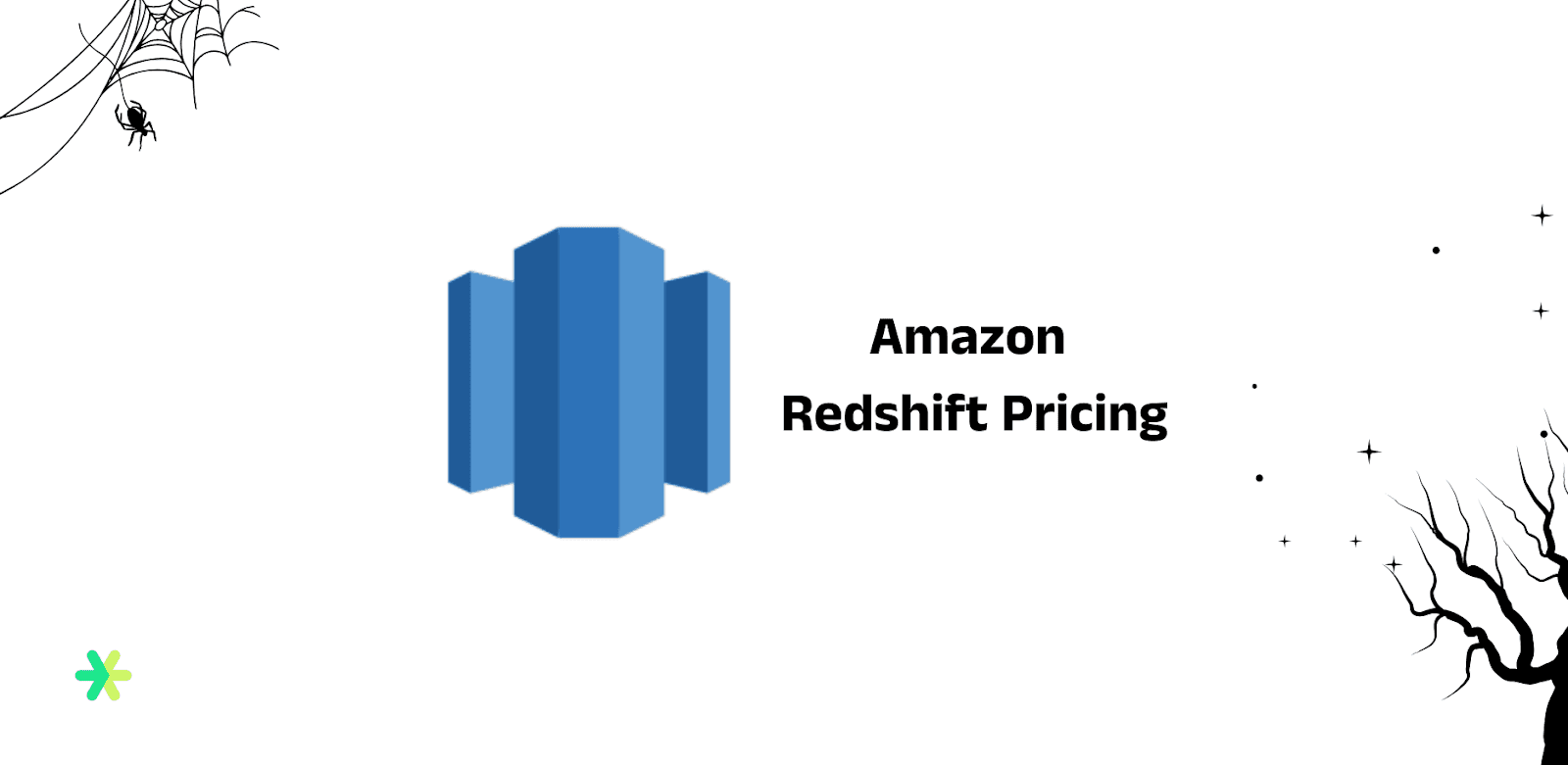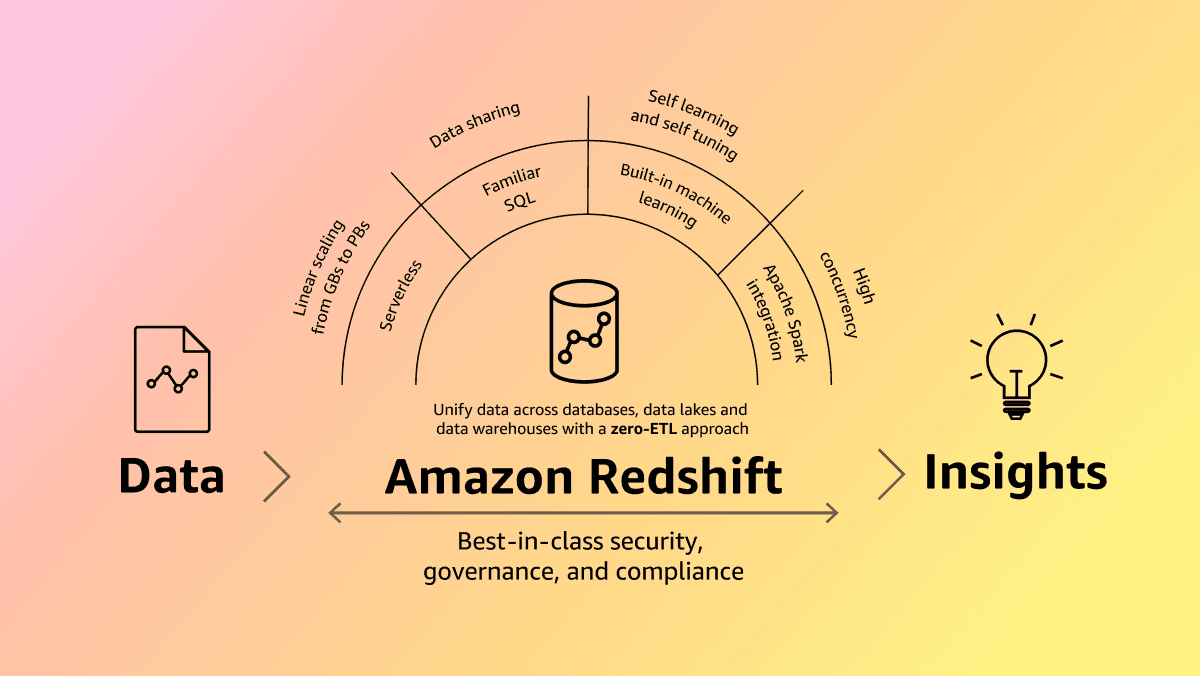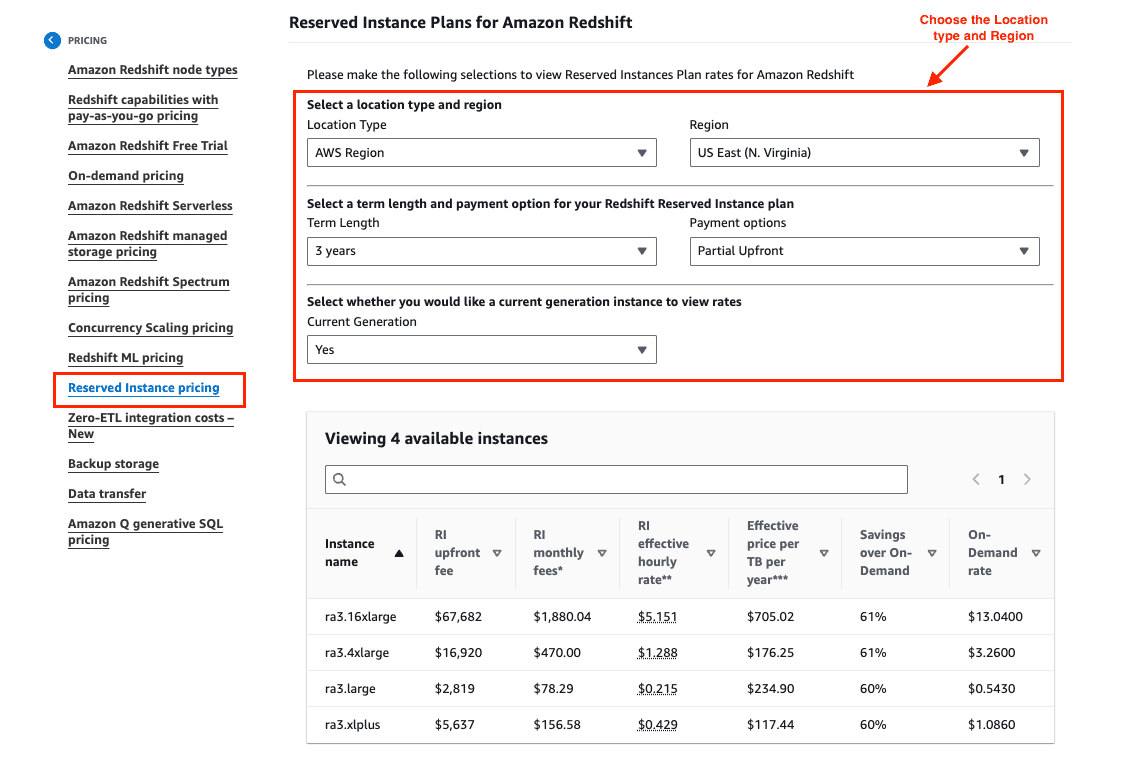
Are you struggling to understand Amazon Redshift's pricing? It can be as overwhelming as learning a foreign programming language, especially for data analysts, cloud engineers, and finance managers who aim to reduce the expenditure on cloud data warehouse management. But there is no denying that pricing is of importance; research reveals that companies can cut approximately 30% of their data storage expenditures by controlling their resources.
Indeed Amazon Redshift comes with its comprehensive features; it provides an enterprise data warehouse solution that guarantees high performance, scale, and availability at a lower price compared to other database systems. This blog will help clear the fog and show how to manage data management expenses while preventing surprise invoices from landing onto your inbox. We will address the core elements of Redshift, explain its pricing strategy, and provide best practices that will allow you to get the most return while minimizing expenses. Using these approaches, you can enhance the cost-effectiveness of your organization while meeting its requirements for data storage.
What is Amazon Redshift?
Amazon Redshift is a remarkably structured, fully managed, cloud-based data warehouse provided by AWS. It is well suited for companies and institutions that aim to improve data analytical processes and make data-driven decisions. Every single day, there are tens of thousands of customers who trust Amazon Redshift to modernize their analytics workloads and extract business value insights.
Using AI and featuring a massively parallel processing (MPP) architecture, Redshift can facilitate faster and more cost-effective decision-making in business. Its zero-ETL strategy minimizes data warehousing to the extent it integrates virtually all data, so what was earlier possible by only super-computers is now possible through extensive common platforms close to real-time applications, as well as AI and ML routines.
They can work in a secure environment and share data across organizations, AWS regions, and third-party data vendors. Also, it features advanced data security options, as well as detailed control measures to control information access.
Key Features and Benefits
Amazon Redshift has several impressive attributes that make it top-of-the-line in terms of data warehousing:
Scalability: Enterprises adjust elastic data quickly and expand storage and compute attributes per a given fanfold of cases and the anticipated requests for queries.
Fully Managed Service: Redshift eliminates the annoyance of infrastructure provisioning and maintenance which would waste time and money, instead streamlining the entire process.
Enhanced Query Performance: Its architecture using columnar storage format and Massive Processing Power (MPP) can faster Query processing résidence gain stimulants.
Cost-Effectiveness: With a pay-as-you-go pricing model, Redshift complements the requirements of the business without requiring any upfront expenditure.
Seamless Data Integration: It integrates seamlessly with the other AWS services and a number of other BI and analytics applications.
When assessing data warehousing appliances, Redshift should be considered as an easily substitutable product against Snowflake and Google Big Query.
How Amazon Redshift Works

Redshift Architecture
One of the main components of Amazon Redshift is its design which is centered on the concepts of clusters and nodes. A cluster consists of multiple nodes where each specific node owns its storage and processing capabilities. The leader node is responsible for overseeing the workload allocation, and the compute nodes are responsible for working on the data processes. For example, in a cluster composed of 10 compute node types, the leader node schedules the workloads of queries to the nodes that are more likely to respond effectively and faster.
Data Storage and Processing
Redshift uses a columnar data format - a design that is suited for read-dominant workloads and unlike the standard databases that utilize row-based structure and storage, redshift stacks data in columns in a way that facilitates faster retrieval during a query’s execution. AWS, in their research, stated that the use of a columnar format can improve the query performance on analytics jobs by as high as 3 to 5 times faster. In addition, data is geographically terraced across the nodes so nodes can work on the data simultaneously, which helps overcome complex queries on massive records more quickly, enabling faster discovery.
Scalability and Performance
Scaling both the storage and the computation power is possibly one of the greatest advantages of Redshift. The user of an organization can start with a small cluster and scale to bigger ones and more configurations as the requirement changes. For instance, when an organization requiring query and data volume faces a spike in demand, more resources can be provisioned at zero cost. In fact, businesses have been able to manage up to 50% less time spent in a query by suitably scaling up the resources with the requirements of the workload. Resources are always available in a short time without waste.
Pricing Model
Redshift has a rather exciting pay-as-you-go pricing model.
Pricing differs with the AWS Region and the type or the number of redshift nodes used.
In the region of US East (N. Virginia) the prices for DC2 large instances begin from $0.25 an hour.
In the Europe (London) region, the same dc.large configuration goes for $0.32 per hour.
After the period of free trial, there are several billing methods available, such as On-Demand Pricing offered by Redshift.
A Deep Dive into Redshift Pricing Structure
On-Demand Pricing

This is a pay-as-you-go model so you will be charged based on the number of active nodes used by you in an hour; furthermore, it doesn’t require any long-term conditions or advance payments. It fits best for workloads that have sporadic requirements. Clusters can be created, paused, deleted, or resumed as required, and the process or request begins at the time of creation. The billing stops, and even the process halts as the cluster is made idle which has the backup storage costs associated.
This option allows the user to modify the type of node or nodes utilized with ordinary clicks in the Amazon Redshift console or through API. However, the drawback is that one of the disadvantages of using Amazon Redshift is the on-demand pricing structure, as it can cost as much as 75% more than competitors. You can reduce the costs of these services using Elastic Resize for small modifications or the Resize Scheduler with auto redirections with requirements.
Reserved Instances

Reserved instances are better suited if your workload is stable as they provide a discount of approximately 75% when you commit to a 1 or 3-year term, compared to on-demand pricing. Redshift has three options to choose from:
All Upfront: Pay in full and reap the benefits of a 42% discount for 1 year or 75% for 3 years.
Partial Upfront: Based on your upfront plan (1% to 99%), you will save up to 41% for 1 year and 71% for 3 years.
No Upfront: This option is a 1-year contract that is without an upfront payment and has an up to 20% on-demand saving.
It’s important to note that reserved nodes will charge you once they have been purchased (despite being in use or not) - therefore, make sure you specify which nodes the reservation applies to. New users can have the opportunity to assess whether Redshift is the right fit for them by partaking in a two-month free trial that is limited to 750 node hours.
Storage and Backup Costs
The Amazon Redshift managed storage cost begins at $0.024 per gigabyte for RA3 node clusters. Btw, the cost of storing 100 terabytes of data in the East US for 30 days is approximately $2,457.60. Isn't it amazing? The managed storage cost mentioned before applies only to RA3 clusters, and this cost includes all data on the nodes’ disks except snapshots or backups, which are charged at the hourly rate. The lag of 35 days after the automated snapshot poses a restriction to the number of automated snapshots allowed, as standard S3 rates apply after that. The charges incurred for managed storage, according to RA3 clusters, differ from those of mission-critical data it is therefore important to understand the needs for storage.
Normally, transport into Redshift does not cost an extra fee, whereas transport out (egress) does however, charging fees for automatic snapshots that are taken on an hourly basis reduces this cost because, in a way, costs are being cut down on transportation out of Redshift including automated snapshots.
Additional Costs and Features

The Amazon Redshift Spectrum pricing is dependent on the data size that is analyzed during the spectrum querying sql process this cost is calculated by first rounding it up to the next MB, with the lowest size being 10 MB, and then charging $0.005 per scan. For example, if an individual queries 10 GB worth of data, the cost is only $0.05, while the cost of querying a terabyte’s worth of data is $5. Most importantly, there are no additional DML table costs. Cost cutting can also be done by utilizing partitioning and parquet compression in order to decrease the amount scanned.
On the other hand, costs for queries put forward to spectrum are incorporated in the overall serverless configurations and the pricing depends upon the specifics as mentioned above.
One must also consider additional expenses, for example:
Amazon Redshift cluster fees for running Spectrum queries
S3 storage fees for the data
S3 request fees for accessing your bucket
AWS Glue Data Catalog fees if you use it for table metadata
KMS charges for encrypted S3 data.
Additional Pricing Benefits
Reserved Instance Discounts
Opportunities to purchase discounted reserved instances cannot be missed out by instance switchers and early adopters as it helps save a lot of money, instead of hourly rates suffering a large cut due to the terms increasing which works great for those who have constant workload management.
Free Tier Offerings
AWS has enabled users to run the Redshift application free of charge. In this context, the customer is provided with one DC2 Large node for the whole month on the condition that the usage does not exceed 700 and 150 hours. The important point is that this free tier enables potential users to explore and understand the capabilities of Redshift, making it a valuable opportunity for businesses considering data warehousing solutions. The offer is as great as allowing them to use Redshift for evaluation and only incur the cost of the time spent on the usage.
Cost Management Tools
As Redshift will definitely incur some costs, AWS provides them with Cost Explorer and Cloud Watch in addition to Redshift to enable users to manage their expenditure trends and usage patterns effectively. That’s why they have the tools and analyze their data to make sure they do not burst the budget that has been set within the organization and avoid incurring too many unforeseen costs on the bills. This makes it possible for better financial discipline as well as better allocation of resources within the organization and, in turn, makes the use of AWS services much more efficient.
Case Study: A Startup's Journey to Cost Optimization with Redshift
Imagine a startup ready for rapid growth but struggling with high data analysis demands as they enter new markets. They initially opted for the expensive Redshift option, hoping the power would future-proof their operations, but this led to unsustainable monthly costs.
As they understood their requirements better, they approached AWS with lower expectations of Redshift. They replanned their consumption habits together with AWS COE and reduced the node types, ordered reserved instances and modified the queries of Redshift in order to limit the usage of Redshift Spectrum.
Keeping in mind the AWS Redshift pricing while ensuring their performance is the trickiest part; therefore, some suggestions would be more user-friendly:
Choose the Right Pricing Model: As your company grows, consider whether pay-as-you-go or reservable instances are better value for your usage. Reservable instances are good for steady workloads and can save you money.
Optimize Data Usage: Decreased the amount of storage used by data archiving that is no longer current on a regular basis and eliminated data that is no longer needed.
Optimize Redshift Spectrum Usage: As the costs are based on the amount of data that needs to be queried, structure your queries efficiently. Make use of partitioning and a columnar storage format in order to optimize the costs.
Tools and Tips for Cutting Amazon Redshift Costs

Monitoring and Managing Costs
Controlling the expenditures you make on Redshift doesn’t have to be scary. Reports on usage and spending that AWS Cost Explorer generates would allow you to see the spending pattern and give you a deeper understanding of how you are investing your money. In addition, AWS Budgets can send you custom alerts before excessive costs occur.
Best Practices for Resource Optimization
Dimensioning the size of clusters according to workloads can lower costs, so making use of AWS services is important. It would help to avoid being charged further by allocating heavy workloads when there is less traffic and strategically reserving locations for uniform workloads. Also, deploying the AWS Quoting tool to help with writing Simple SQL queries could be beneficial to the whole data processing and storing expenses.
Cutting Down Data Transfer Fees
You can save money on data transfer charges by combining multiple transfer procedures and reducing the amount of data that needs to be moved. Knowing the data movements, modifying the queries, and using the AWS Query Editor will allow you to spend less money.
Minimizing Costs With Pump
An additional answer to the question of cost saving is Pump’s AI and group purchasing, Pump enables companies to slash your AWS charges, including Redshift, by up to 60%. This is an easy way of getting some relief without breaking any sweat in your team's technical work. In addition, there are more volume tier discounts, which most of the services engineering teams depend on them.
Sign up Pump for free and do not wait; start reducing cloud expenditures now.
Conclusion
Comprehending the pricing of Amazon Redshift is critical to the effective planning and control of costs in the cloud computing environment. As customers gain insight into its pricing models, features for cost savings, and strategies for cost growth management, they will be able to leverage the returns on their Redshift spending in a proper way.
We would like to suggest tips that were covered in this blog in order to cut the costs of using Redshift in your case. This can be done by using reserved instances, monitoring parameters, or even some more advanced ideas such as Pump.
Join Pump for Free
If you found this post interesting, consider checking out Pump, which can save you up to 60% off AWS for early-stage startups, and it’s completely free (yes, that's right!). Pump has tailor-made solutions to take you in control of your AWS and GCP spend in an effective way. So, are you ready to take charge of cloud expenses and maximize the most from your investment in AWS? Learn more here.




